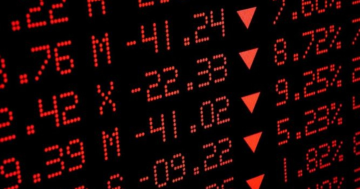The share market is a great way to build long-term wealth, but it also comes with the risk of losing money. Philip Bish* looks at how ETFs can be used to help minimise this risk.
 Risk is defined as an exposure to a possible gain or loss of something of value, such as your health or wealth.
Risk is defined as an exposure to a possible gain or loss of something of value, such as your health or wealth.
Given the future always has with it an element of uncertainty, each one of us has to regularly deal with the concept of risk in our day-to-day lives.
In investing, how well we manage risk is often the key factor that determines our long-term success.
Famed investor Howard Marks believes that dealing with risk is the most essential element of investing.
He believes in a three-stepped approach to risk.
The first step is to understand the risks.
The second step is to recognise when those risks are high.
And the third step is to control and manage those risks.
When markets are flying, investors as a whole, often take greater risks.
However, when markets fall, those same investors tend to become risk averse.
It should actually be the other way around.
When markets are high, risk aversion should also be high, but when markets fall, we should be looking to take advantage of opportunities.
In investing, risks can be lumped into two main categories.
There are ‘unsystematic risks’, which are risks that relate to a specific stock or sector, and there are ‘systematic risks’, which are risks that impact the market as a whole, such as high inflation or a war.
Unsystematic risks can be mitigated with a well-diversified portfolio, such as with broad-based ETFs.
Systematic risks however are a lot harder to mitigate, but there are still some approaches that work.
Unsystematic risks
Unsystematic risks are risks that are stock specific or related to a sector.
For example, if you own shares in company XYZ, you carry a number of risks.
These include the risk that the company will not reach its profit targets, or the company loses a key contract, or a product is recalled, or the company commits fraud.
Unsystematic risks can also include sector wide risks.
For example, there’s the risk that extra regulation is brought into an industry (such as banking), or the risk that a super-profits tax is introduced into an industry, such as the mining industry.
Unsystematic risks can be mitigated through diversification, which helps to smooth out portfolio returns if there is a fall in one stock or sector.
In the current market, we can see the advantages of diversification, with several sectors such as technology and healthcare struggling, whilst energy and utilities have performed well.
Diversification helps to smooth out an investor’s overall returns, especially over the long-term.
Systematic risks
Systematic risks are external risks that affect the market as a whole.
Examples of systematic risks include sizeable rises in inflation and interest rates, as we see at the moment.
The GFC and collapse of the US housing market is another example of systematic risk.
Other types of systematic risks include natural disasters, war, terrorist attacks or pandemics such as Covid-19.
Systematic risks are a lot harder for investors to mitigate, but there are some things that can be done.
One of the best approaches for mitigating systematic risks is to have a correct asset allocation strategy.
This means that your portfolio includes a variety of asset classes such as fixed interest, cash, real estate, infrastructure, and local and international shares.
If say shares fall, a well-structured portfolio will be less impacted, as it holds other asset classes such as cash.
Another approach to mitigating systematic risks is to combine a well-diversified portfolio, with patience and hanging in there during the tough times.
If we look at the All-Ordinaries chart over the last 100 years, we can see that there have been a number of downturns caused by systematic risks.
These include the Great Depression, the Oil Shock of 1973-74, the crash of 1987, the tech wreck, the GFC, and the Covid crash.
In every single downturn, the market recovered and went on to make new highs, and that’s why long-term investing works.
ETFs
The beauty of broad-based ETFs is that they are a cheap way to give you the wide diversification that is needed to help you minimise risk.
If your approach also includes correct asset allocation, and the patience to ride out volatility, it can provide you with the best approach for minimising the risks of investing, while still enjoying the benefits that long-term investing can bring.
*Philip Bish assists in the coverage across the ASX, Exchange Traded Funds (ETFs) and Listed Investment Companies (LICs) at InvestSMART.
This article first appeared at investsmart.com.











